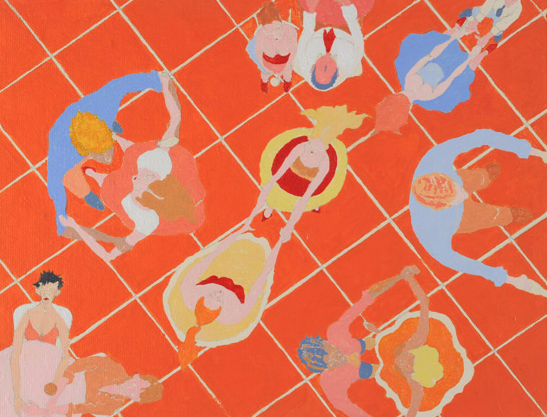We are in the midst of a pandemic and there are proper and legitimate concerns as to how the civil and criminal courts system should conduct itself, given the public nature of court hearings and court waiting rooms and the impossibility of following public health guidelines in the context of traditional court proceedings.
Video and phone technology is being touted as a solution. In my own area of legally aided housing law, guidance has finally been issued to stop block listing of housing possession cases and we are told that future hearings in possession proceedings may be conducted by telephone. The Nearly Legal Blog has carried my own experiences of risk and Sue James has written about the risks of block listing here (here).
The Lord Chief Justice’s guidance regarding jury trial on 17th March 2020 reads:
The impact of the public health emergency on the operation of the courts has been under constant review. In all jurisdictions steps are being taken to enable as many hearings as possible to be conducted with some or all of the participants attending by telephone, video-link or online.
In a message to civil judges of 19th March 2019 , he says:
The rules in both the civil and family courts are flexible enough to enable telephone and video hearings of almost everything. Any legal impediments will be dealt with. HMCTS are working urgently on expanding the availability of technology but in the meantime we have phones, some video facilities and Skype.
The efficacy or otherwise of video and other technology in judicial setting is complicated and there is detailed work underway on this by academics such as Dr Natalie Byrom of the Legal Education Foundation and others.
The issue is already controversial because the government’s ongoing court reform program is tilted firmly towards the use of video technology and until, recently to the dismay of many, away from court buildings and hearings in person. Prior to the current crisis, video and telephone technology has been seen as part of a drive towards efficiency savings at the expense of fairness, as well as allegedly introducing convenience for court users.
There are concerns that people with vulnerabilities of many different kinds, including educational and financial vulnerabilities, as well as more obvious kinds of easily apparent disabilities, may be at a disadvantage in having to use the technology.
Remote hearings may seem like an attractive proposition at a time when public health guidance is for us to exercise social distancing, but it seems to me that the move to video and telephone needs an approach beyond the current traditional conception of ‘equality of arms’ towards a sort of vulnerability-and-digital-illiteracy premium in court proceedings such that the decision-making process is weighted in favour of those who would be otherwise prejudiced by the use of new or unusual technologies, including telephone, for hearings.
Why such people would be prejudiced is a complicated and multi-faceted question. This needs more detailed consideration, by much cleverer people than me, but as one strand of that consideration I would like us to consider how familiar people are with court processes and court rooms, even if they have never been in a court room in their lives. This familiarity comes through books, TV, radio, films, newspaper court reporting and many other media artefacts.
From Bleak House, to Judge Rinder, Behind Closed Doors to Twelve Angry Men, not forgetting the admittedly sadly declining art of local newspaper court reporting, the mise-en-scène, the dramatis personae and many other aspects of court proceedings has been available and widely consumed through fictional representations of traditional court rooms and procedures. A person facing a court hearing for the first time in whatever role has a vast amount of culturally acquired knowledge to support them in finding their own place in the setting and narrative of court proceedings.
While it is true that fictional representations can be sensationalist and sometimes inaccurate – there is a twitter account solely dedicated to the inaccurate use of gavels in the media – I argue that nevertheless the sheer volume of cultural knowledge about courts and procedures provides people attending court with useful cultural reference points to assist them to navigate their way and find some familiarity in their experience.
It is also true that court proceedings have a well-earned reputation for obscurantism, and in fiction perhaps Kafka’s The Trial best reflects the anxiety and paranoia surrounding that. I argue that the drivers of that opaqueness lie mostly in the law itself rather than exclusively in the mode of expression of the law. While a court room is patently a theatrically constructed space, with hierarchies of role inscribed into the physical space itself, the ‘set design’, ‘costume’ and ‘characters’ are at least familiar to virtually everybody. It is the language of the law that is obscure, and that language will not be changed by use of telephones or Skype for Business TM.
My thesis is that a person walking into most courtrooms will not be baffled by what we might call the ‘genre’ of what they are experiencing. That is not at all true of video hearings or even telephone hearings. This matters, in my view, because the professional classes, who are much more likely to have some experience of formal video conferencing and conducting formal business by telephone, or are likely to have the skillset to learn and acquire aptitude in the ‘genre’, may have a distinct advantage over a large section of society who do not.
If we are to introduce new technologies into legal proceedings those technologies must work to reduce structural power imbalances in society not to re-iterate them and especially not to amplify them.
There are many reasons why aptitude and inaptitude for the ‘genre’ in a judicial setting can create disadvantage and unfairness. The most obvious is the extent to which an argument can be made persuasive by apt presentation within the mode of interactions, while an inapt, nervous presentation can make an argument appear weak. A lack of familiarity with the ‘genre’ is a massive barrier to the kind of apt presentation that connotes clarity and strength.
Any structural disadvantage to people of any level or kind of vulnerability must be addressed immediately and while these new technologies bed in if there is to be any chance of fairness in any remote access justice system. While we await proper research into these technologies in the judicial setting, and even mass education arising from that research. It may be that this will only be achieved by a vulnerability weighting in the decision-making processes of the court.







